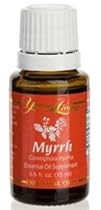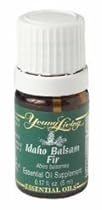6 Biblical Oils with Healing Properties to Brighten Your Day

“By the river on its bank, on one side and on the other, will grow all kinds of trees for food. Their leaves will not wither and their fruit will not fail. They will bear every month because their water flows from the sanctuary, and their fruit will be for  food and their leaves for healing.” Ezekiel 47:12
food and their leaves for healing.” Ezekiel 47:12
1. Frankincense (Boswellia carteri) has a sweet, warm, balsamic aroma that is stimulating and elevating to the mind. Useful for visualizing, improving one’s spiritual connection, and centering, it has comforting properties that help focus the mind and overcome stress and despair. Frankincense is considered the holy anointing oil in the Middle East, where it has been used in religious ceremonies for thousands of years. More recently, it has been used in European and American hospitals and is the subject of substantial research. Frankincense is also a valuable ingredient in skin care products for aging and dry skin. The ancient Egyptians used it in rejuvenation face masks.
2. Cedarwood (Cedrus atlantica) has a warm, balsamic, woody aroma. It is relaxing and soothing when used for massage, and can  be used as a dietary supplement to maintain healthy lung function.* Cedarwood has long been used as a beneficial ingredient in cosmetic preparations for oily skin. Cedarwood has an approximate ORAC of 1,689,996 (TE/L). TE/L is expressed as micromole Trolox equivalent per liter.
be used as a dietary supplement to maintain healthy lung function.* Cedarwood has long been used as a beneficial ingredient in cosmetic preparations for oily skin. Cedarwood has an approximate ORAC of 1,689,996 (TE/L). TE/L is expressed as micromole Trolox equivalent per liter.
3. Myrrh (Commipihora myrrha) has a rich, smoky, balsamic aroma that is purifying, restorative, revitalizing, and uplifting. It is a helpful aid to meditation, having one of the highest levels of sesquiterpenes available. Sesquiterpenes are a class of compounds that have a direct effect on the hypothalamus, pituitary, and amygdala, the seat of our emotions. Myrrh is referenced throughout the Old and New Testaments of the Bible. The Arabian  people believed it helped wrinkled, chapped, and cracked skin. Today, myrrh is widely used in oral hygiene products.
people believed it helped wrinkled, chapped, and cracked skin. Today, myrrh is widely used in oral hygiene products.
4. Fir Traditionally used for muscular aches and pains, the warm aroma of balsam fir soothes and rejuvenates body and mind (as it is believed to create an uplifting sense of well-being). Known for supporting respiratory function *, this herbaceous oils can be diffused for aromatherapy or diluted with a carrier oil for topical application.
5. Cinnamon bark (Cinnamomum verum) has that wonderful spicy scent loved around the world. Cinnamon oil is now being used in many recipes as a tangy, inventive ingredient. Historically, cinnamon was so popular it was the main reason behind the occupation of Ceylon  by first the Portuguese, then the Dutch, and then the British. It is best to dilute cinnamon bark before topical application or direct inhalation. Cinnamon Bark has an approximate ORAC of 103,448 (TE/L). TE/L is expressed as micromole Trolox equivalent per liter. Possible skin sensitivity. If pregnant or under a doctor’s care, consult your physician. Always dilute before applying to the skin or taking internally. Keep out of reach of children.
by first the Portuguese, then the Dutch, and then the British. It is best to dilute cinnamon bark before topical application or direct inhalation. Cinnamon Bark has an approximate ORAC of 103,448 (TE/L). TE/L is expressed as micromole Trolox equivalent per liter. Possible skin sensitivity. If pregnant or under a doctor’s care, consult your physician. Always dilute before applying to the skin or taking internally. Keep out of reach of children.
6. Spikenard (Nardostachys jatamansi) was highly regarded in India as a perfume, health-supporting herb,  and skin tonic. Prized at the time of Christ, it was used by Mary of Bethany to anoint the feet of Jesus before the Last Supper. This is a relaxing and soothing oil for the skin.
and skin tonic. Prized at the time of Christ, it was used by Mary of Bethany to anoint the feet of Jesus before the Last Supper. This is a relaxing and soothing oil for the skin.





Muchos Gracias for your blog post.Really thank you! Keep writing.